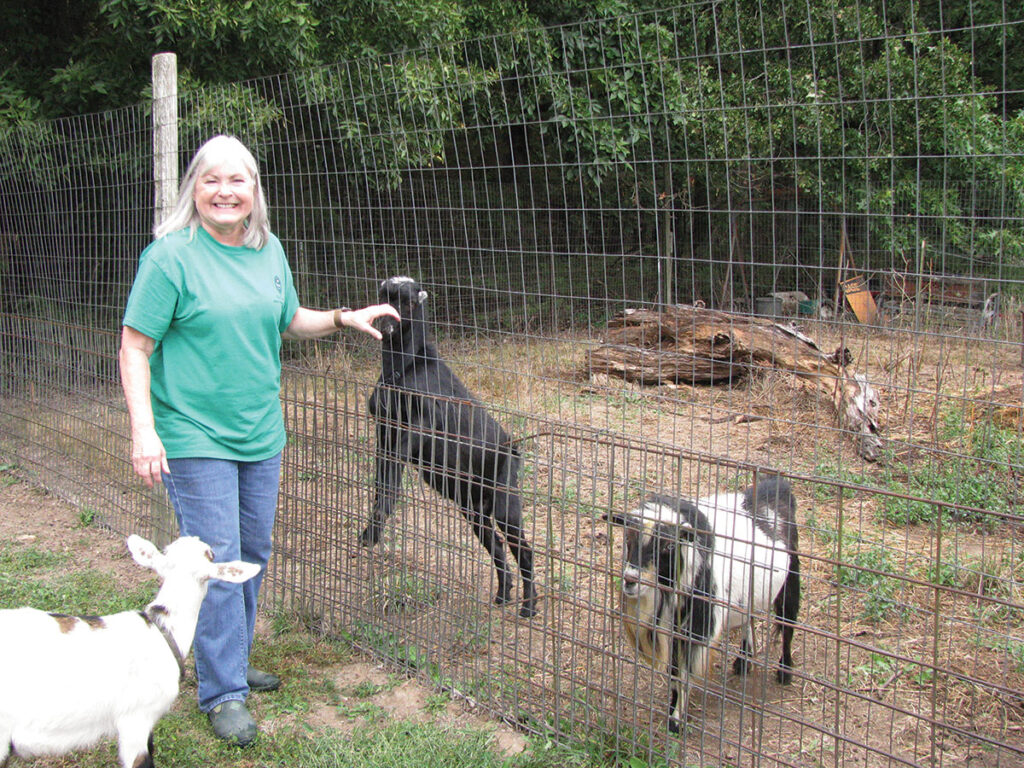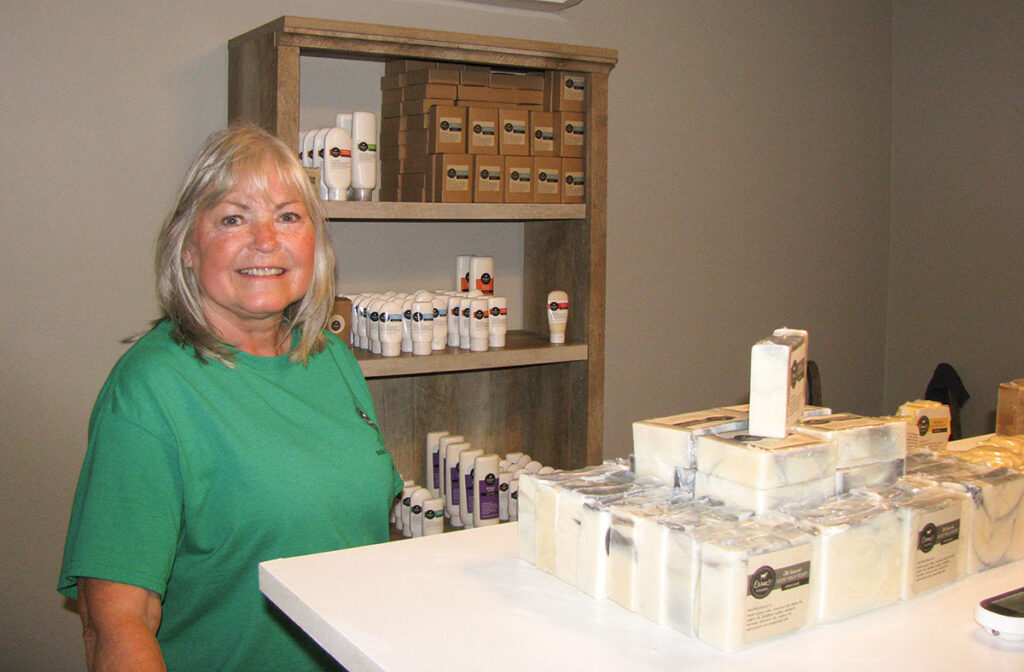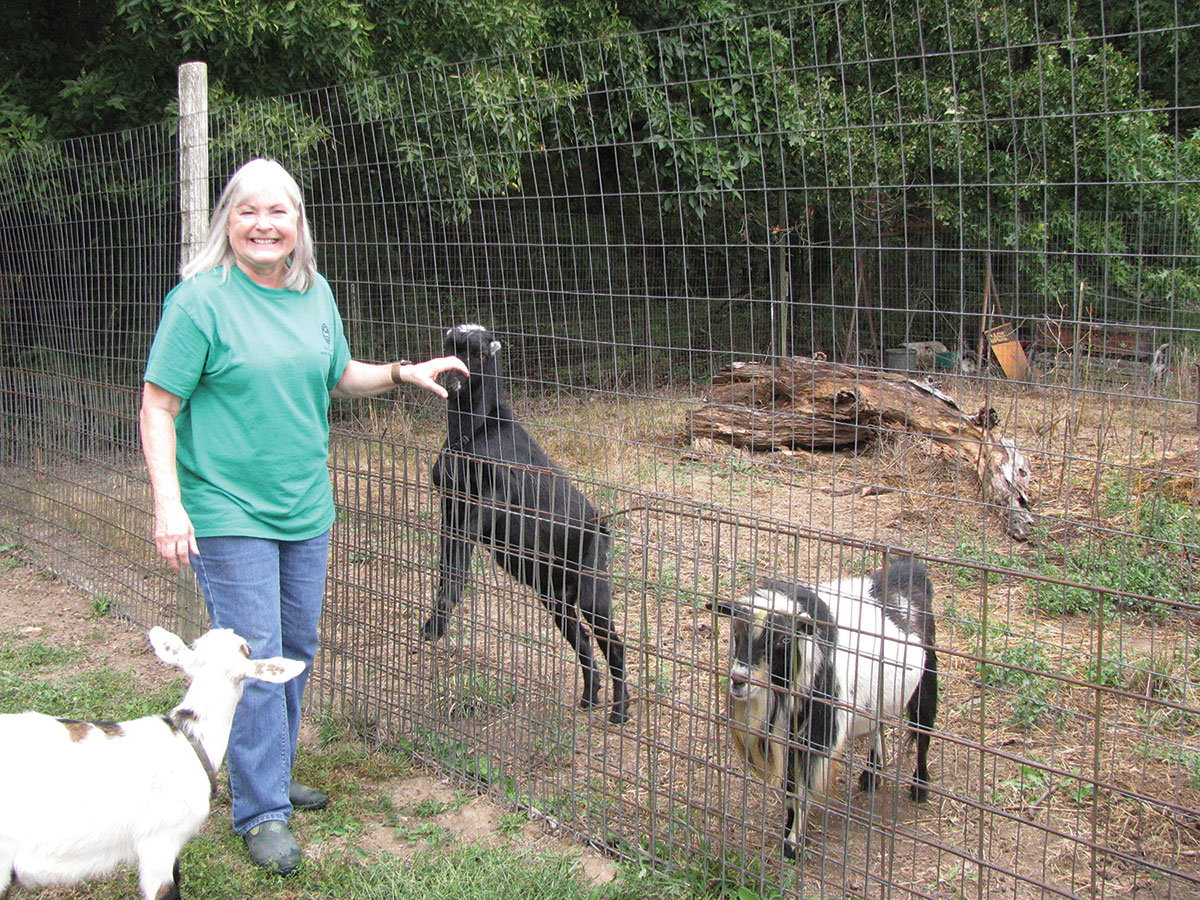
Susan Clark has her own line of soaps and lotions
FORDLAND, MO. – After working in a hospital for 40 years, Susan Clark retired and began a new adventure raising goats.
Susan and her husband, Dennis, live on their 50-acre farm near Fordland, Mo., in Webster County. They have lived there for 17 years. For the past 10 years they have been raising goats.
“They were so cute, and I had used goat milk soap and thought it was great,” she explained. She had a friend who also milked and made soap. She remembers thinking, she do the same when she retired.
Susan started slow and only made soap for herself, then other people asked if she would make soap for them.
“One thing led to another. I couldn’t quit making soap, and then I came out with different fragrances and essential oils. Then I started with the lotion and that was quite the undertaking, because I messed up one batch at a time,” Susan said. “You always have to have failure. I did that with the soap.”
After three to four months of making lotion, she finally got the consistency that she wanted and with the oils she wanted.
A great help for her, when she was learning was ‘“The Soap Queen” online.
“She’s out there to educate soap makers. But after a while, I decided to go with my own oils,” Susan said.
It took a while for Susan to get the bar of soap that she wanted because she wanted more goat milk, because she loves the benefits and vitamins of goat’s milk.
“So I went heavier than most recipes call for. With that came a lot of painstaking mistakes, unfortunately. Whenever you add fat content it throws your mixture off,” she explained.

It takes 60 days to cure a bar of soap.
“Whenever we make a batch of soap, I have to let it cure in the blocks,” Susan explained. “Then I cut it.”
Once it’s cut, it’s wrapped and ready for retail.
Susan has 10 does, two bucks and one wether, which is a fainting goat. Her dairy herd breeds are Mini Lamancha, Alpine, Togenburger and Nigerian Dwarf goats. She bred the Lamanchas to become mini. She wanted the minis because “their milk tastes good.”
“I love Nigerian milk, but you get the quality but not the quantity I desire. So Mini Lamanchas are great. I have learned over the years, the smaller the goat, the better-tasting the milk, because it has more milk fat. The more milk fat, the more moisturizing for the soap,” Susan explained.
After goat kids are born and are 3 or 4 weeks old, Susan separates them from their mommas, just in a stall next to them, from about 9 p.m. until the next morning.
“We call it the ‘shared milk’ program,” she said. “I’ll milk the moms, but only about halfway down. Then I put the babies back on them and let them be on them all during the day.”
She keeps the kids on the does for at least 12 weeks.
“If it’s a doe I’m going to keep, I’ll leave them on 16 weeks. The longer they’re on that doe, the bigger they’re going to grow,” Susan explained.
Once the kids are weaned, Susan continues to milk the does until it’s time to dry them off and breed again.
March and April are the months when she likes for the kids to be born.
“A lot of people look for January and February. Somebody told me, ‘I don’t like the little popsicles falling to the ground.’ That’s what I think of when it’s so cold,” she said. March can still be cold, but that is what Susan has found works best for her goats.
She milks from March or April until about August. The gestation period is about five months, and goats usually have twins. Goats can kid twice a year, but Susan chooses to only breed them once a year.
“I’m in the dairy business and not in the meat business,” she stated.
Turning milk to soap is “quite a process,” said Susan’s husband, Dennis. “I couldn’t do it. She has a background in medicine and chemistry. If you don’t have it, you can’t make it like it’s supposed to be made. A lot of people do, but it’s not professional.”
“He believes in me one 100 percent. I have friends who are soap makers and they do fine,” Susan said, adding it is very much a process of trial and error. “The more that you want to do something, the more effort you are going to put in it,” she added.
Susan sells the majority of her products online through her website.
With her goat’s milk Susan makes soap, lotions, lip balms, and spritzers made out of the essential oils she uses in the soap. She also makes goat milk ice cream, and her favorite goat milk fudge.
“I love having a product that people love. There’s a great satisfaction in having and raising the goats and being able to share them. I love making the products,” Susan stated.
For someone wanting to start a goat herd, she recommends educating yourself as much as possible. Excellent fencing and good shelter are also key elements. “Goats hate rain and snow. They don’t want anything falling on them that’s wet,” she stated.







